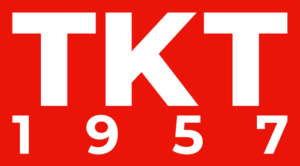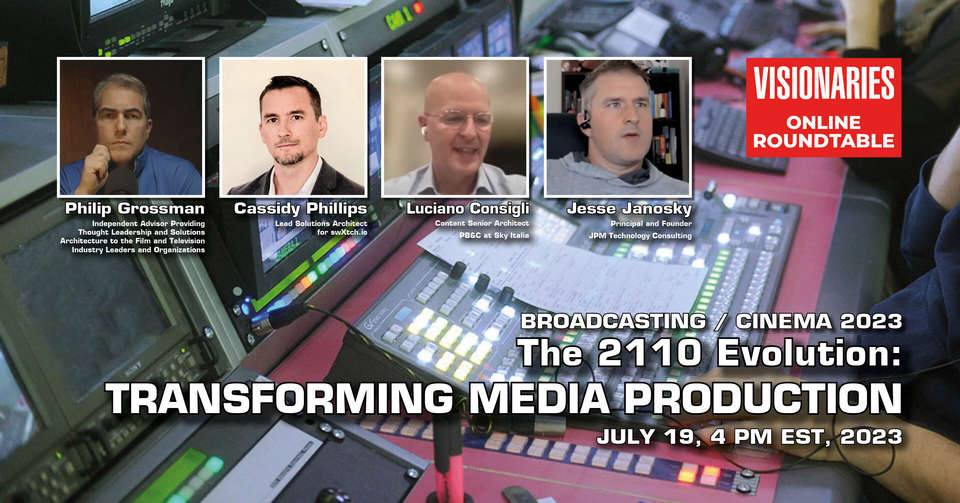 Welcome to TKT Visionaries, our monthly podcast where we discuss industry trends with experts to understand the factors influencing our sector.
Welcome to TKT Visionaries, our monthly podcast where we discuss industry trends with experts to understand the factors influencing our sector.
The event is organized by TKT1957 and hosted by Philip Grossman, an independent advisor providing thought leadership and solutions architecture to leaders and organizations in the film and television industry (USA).
Philip Grossman: Today, I’m privileged to host two individuals who are not only industry connoisseurs but also dear friends.
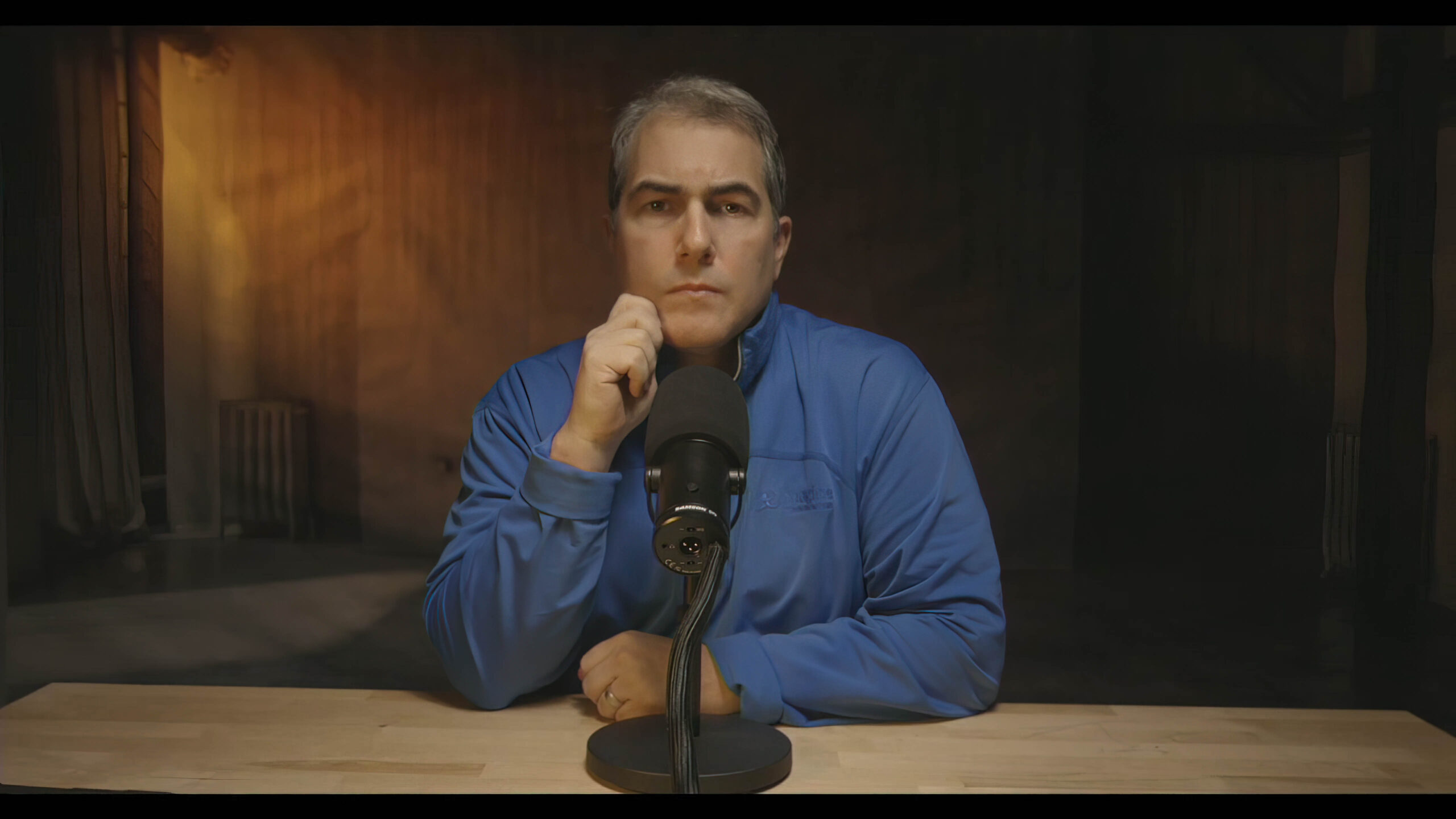
First, we have Cassidy Phillips, the Lead Solution Architect at swXtch.io. Additionally, he serves as the SMPTE governor for the Pacific Northwest region. Cassidy boasts a track record of over 40 successful SMPTE 2110 projects, spanning from conceptualization to execution. Currently, he’s channeling his efforts to integrate 2110 with cloud technologies.
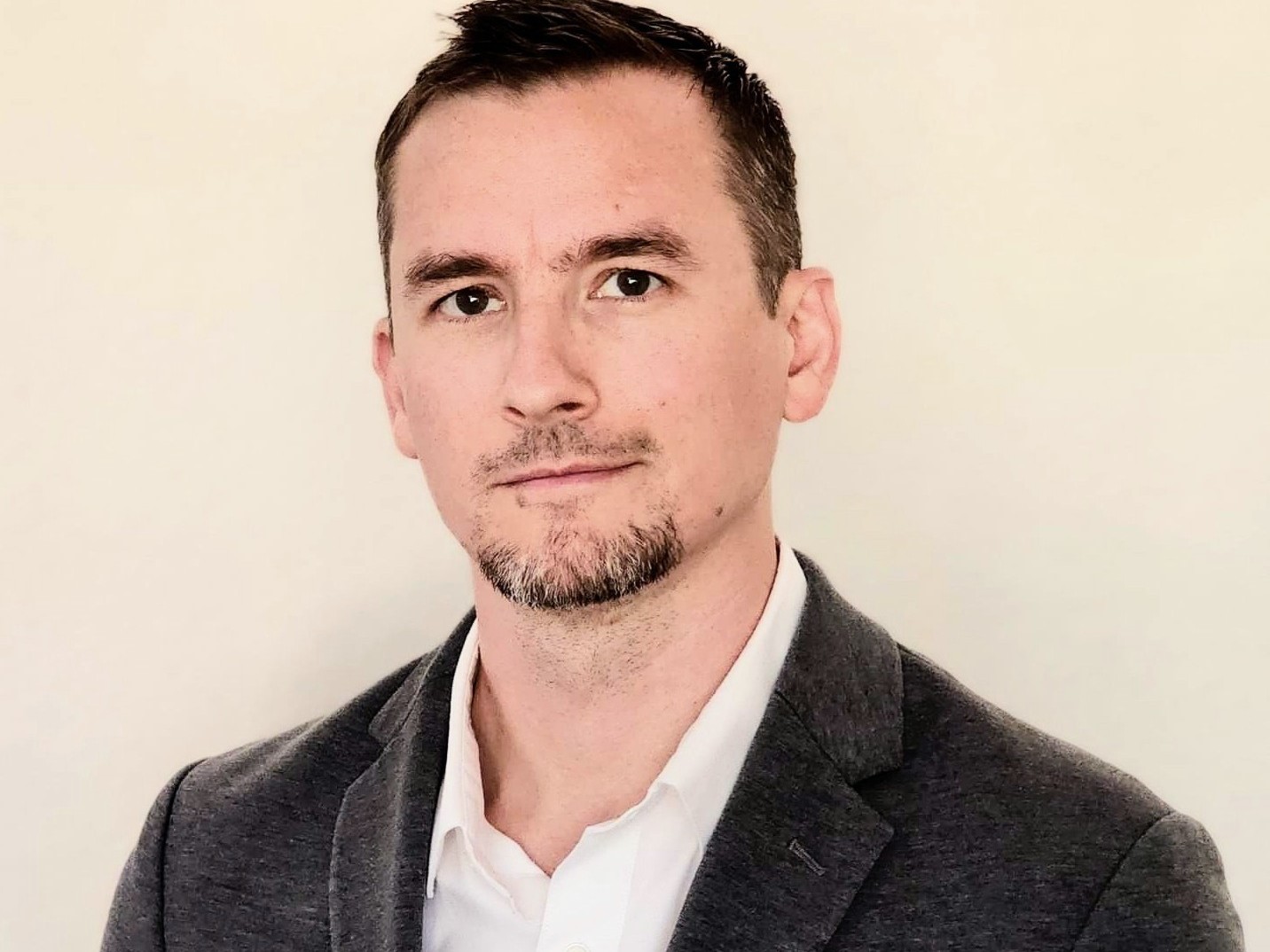
Joining him is Jesse Janosky from JPM Technology Consulting. Jesse, an industry stalwart with 18 years under his belt, he embarked on his 2110 journey in 2017. This began with a multi-venue deployment at Texas A&M University. Since then, he’s been deeply involved in various deployments, both from the end-user perspective and the design integration front. His most recent accomplishment was orchestrating a multi-vendor 2110 setup for the State Farm Stadium, just in time for this year’s Super Bowl.
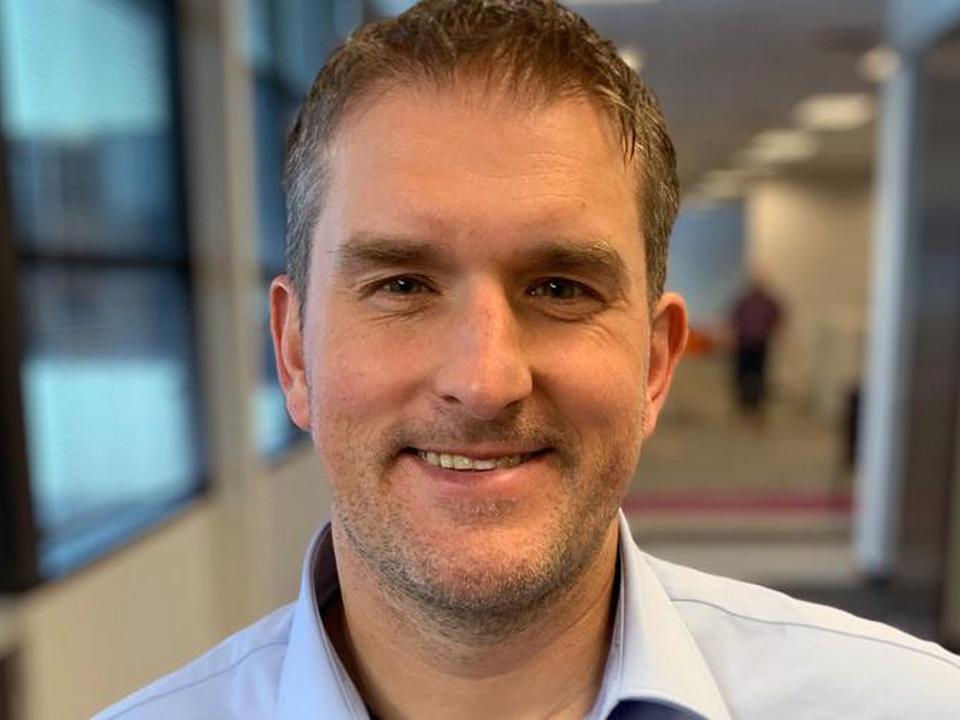
So, a warm welcome to both Jesse and Cassidy. I’m truly grateful for your presence today. To kick things off, Jessie, I’d like to direct the first question to you. Are we witnessing a shift towards the adoption of 2110 in the industry? Is it becoming the go-to standard for new builds, or are there still considerations for SDI? Have we reached that pivotal moment yet?
Jesse: I genuinely believe we’re witnessing a shift towards 2110. Interestingly, the resistance isn’t coming from the end users. The younger generation of engineers seems more receptive and eager to adopt the technology. The hesitancy primarily stems from installers and designers who lean towards the 12G and baseband. This reluctance might be due to a combination of unfamiliarity and a tendency to stick to what’s known. However, the past year has seen significant progress, with more end users wholeheartedly embracing 2110. I’m aware of several deployments where teams are thinking outside the box, considering alternative switch manufacturers, or exploring hybrid cloud solutions that complement 2110. So, it’s not just about deciding to transition to 2110 or sticking with baseband.
Philip: Cassidy, I’d love to hear your perspective. In your line of work, do you still sense that hesitancy? Or are clients more decisive, fully committing to 2110 and looking ahead?
Cassidy: Phil, remember when we first started with 2110? We had to explain the basics, and people kept asking about their patch bay. Now, like Jesse said, the conversation has changed. People are talking about connecting multiple sites with the cloud, improving work processes, and managing things from afar. These topics weren’t big a few years ago. I don’t hear much about SDI anymore. Maybe it’s because I work a lot with cloud stuff now, so I mostly deal with IP. But I think people now see the good things 2110 brings, especially with the ability to multicast in the cloud. This means we can use 2110 in many ways, whether the data is big or small. The options with 2110 are wide open. Like Jesse mentioned, if people see the benefits and aren’t scared of the techy parts, they’re eager to use it.
Jesse: Cassidy, you’ve worked on more setups than I have. I remember when we started, we usually stuck with one company for everything. Now, I see different setups, and they’re using parts from many companies. This change is like a two-sided coin. On one side, it shows people are open to trying new things with different companies. On the other hand, it highlights the benefits of this approach. Before, you’d buy everything – the router, the connectors, and other parts – from one company. They’d promise you the best service. Now, it’s more about mixing and matching and working with different companies.
Philip: This makes me think. In the past, the main part of the system was a big router. You’d buy it, and it came with its control system. Now, the heart of the system is an IP switch, from Cisco, Arista or Mellanox. This change has allowed new companies, like Lawo, to make control systems, even if they weren’t big in video routing before. Are you seeing more companies making control systems? Or are the usual big names still leading the way?
Jesse: You mentioned Lawo. There’s this solution from Germany, “High Broadcast Solutions,” which I think Imagine uses. That team started from Lawo. So, not only are there more control systems popping up, but some folks are branching out and making their own systems. We’re not fully there yet, but we’re using IT-based standards with a broadcast approach. This means we can now work with people skilled in scripting and app development. EVS, with their Cerebrum platform, is gaining ground. I know of at least three setups where they handle control without any gateway equipment. I see more folks taking a step-by-step approach, working with different vendors. It’s like setting up a plan, similar to how you’d make a hiring list. They pick control systems, test them out, and then decide. It might be Imagine, EVS, or Evertz. Once that’s sorted, they move to audio, list down potential vendors, and narrow it down. This is the pattern I’ve noticed. Instead of just writing out a Request for Proposal (RFP), it’s more about picking the best fit.
Philip: You brought up audio. With the 2110 standard, there’s a lot of room to play around on the audio side, especially since it uses AES 67. In the past, we had separate audio routers or a part of the main router just for audio. Now, are you seeing everything being put on one set of switches? Or are we still keeping things separate? How do you see things changing with audio?
Jesse: I feel that while audio isn’t as complex as video, it’s more about using different ways to transport it rather than different vendors. The question is, how do we stick with what we know, depending on the user? Do we keep it analog? Use MADI? Include Dante? Or go with the dash-30 standard? There’s a lot to consider to make everything work smoothly. Cassidy might have more to say since he’s worked on many audio setups. For me, I often forget to focus on audio. But when I’m on-site, audio issues or adjustments are usually the first things that come up during the setup.
Philip: There’s a saying: “Audio without video is radio and video without audio is just security footage.” Cassidy, what’s your take on the audio aspect?
Cassidy: Jesse’s points made me think about why people choose the best tools for the job. One of the main reasons big users like NFL and Hollywood Park want 2110 is flexibility. They want to easily change or upgrade parts without waiting years. They’re focused on making the best content right now. This means they don’t need everything from one manufacturer. They might want a better part from another company next year and just swap it out. That’s why having standards is so important.
But we also need to think about the people using these systems. For example, in big productions, the person handling audio is different from the one directing the show. So, sometimes, it makes sense to keep things separate to avoid confusion. Also, people can be attached to certain tools. Jesse and I saw this in one of our projects. Someone might love a specific audio board or switcher. So, we try to give them what they want without letting it control the whole setup. Every system I’ve worked on has been unique. Often, the audio system gets updated at a different time than the video. In TV stations, they might keep the old audio system. If we’re lucky, it uses AES 67. But the video might use a different version. So, we set up separate areas for each. I often suggest having a bridge between them, like a MADI bridge, to prevent mix-ups between audio and video.
Philip: I want to bring in our other special guest to join us, Luciano, if you want to quickly introduce yourself. I think I have some questions for you as well.
Luciano Consigli, Content Senior Architect PB&C at Sky Italia: I’m Luciano Consigli from Sky in Italy. Sky operates in Italy, the UK, and Germany and is part of Contact. We began using 2110 a few years ago in our facilities. Now, we’re working with swXch.io to use 2110 in the cloud. We’re moving many processes to the cloud, and having multicast there will be a big change for us.
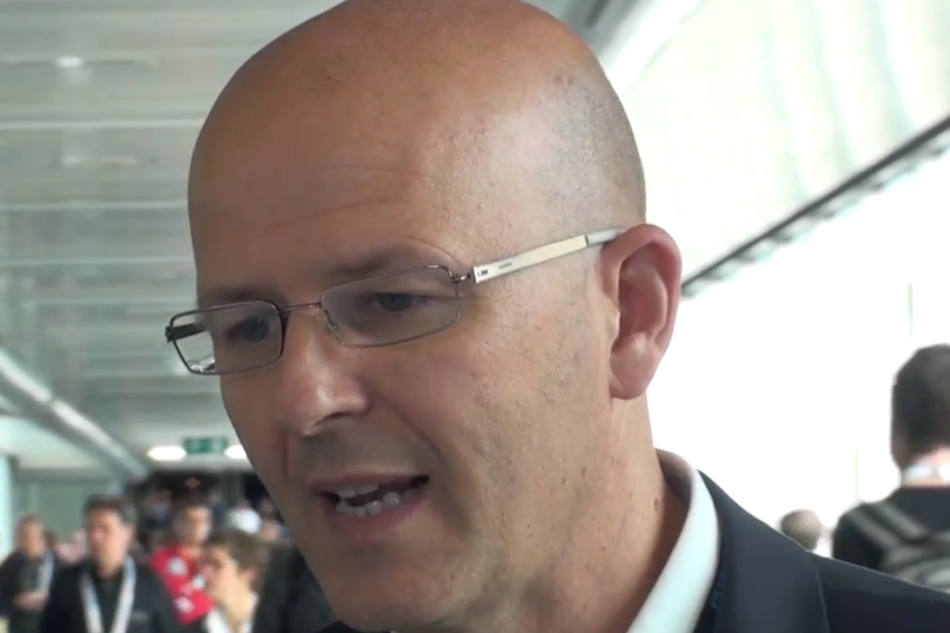
Philip: I know Sky Italia well. I heard about it a lot when I was with the Imagine group. I think before 2110, you were using 2022. Sky is a big company, so using 2110 must be a big deal. Does it let you do things you couldn’t do with SDI? What new things can you do with IP?
Luciano: One of the main benefits we’ve seen is getting past the limitations of traditional router sizes. Now, everything is networked and shared across various devices. We haven’t finished updating all our studios and facilities yet, even though we began this process around 4 years ago. The most significant advantage is the ability to share sources. Everyone can access anything without having to switch between different routers in the production center. This flexibility is a huge plus. However, we’ve noticed some challenges with audio in the 2110 standard. While in theory, you can shape any multicast at the edge, there’s a limit to how many multicast sources you can run. So, we’ve had to make decisions about how many multicasts to have. Often, when we need to adjust or reroute, we have to use specific audio routing, whether it’s IP-based or another type. The audio aspect has been one of our most challenging areas.
Cassidy: Sky was ahead of the curve, wanting to adopt 2110 even before the standard was set in stone. Luciano’s point about device limitations, especially concerning audio channels per multicast stream, is spot on. It was a challenge getting all devices on the same page. Even if a production team wanted a single audio channel for each multicast, not every device in the network could support that. So, compromises were inevitable. While newer devices are more accommodating, early adopters like Sky had to designate specific areas in their system for audio adjustments. This separation might be beneficial in some ways, especially when you have distinct audio and video teams. But trust becomes crucial. Speaking from my experience in master control, there are moments when you’re the last checkpoint before content is broadcasted. In such instances, having the capability to modify audio channels on the fly is essential.
Philip: Jesse, with 2110, there’s a lot more flexibility in IP than with SDI. Are customers leveraging these new capabilities? Or are they mainly replicating their SDI processes in an IP environment?
Jesse: I’ve observed customers taking advantage of these capabilities, often in unexpected ways. Like any innovation, we start with a vision, learn from it, and then challenge our previous knowledge. For instance, I see integrations using universal switch panels, custom scripting, and custom SDP files. This allows for the integration of tools like the Elgato stream deck to build virtual GUIs. However, the most significant innovation I’ve noticed is in multi-viewing. Previously, multi-views were restricted to card-based systems or those linked to video routers. Now, with solutions like TAG and others, there’s a shift towards COTS-based multi-views. This has led to innovative data extraction methods, especially in sports.
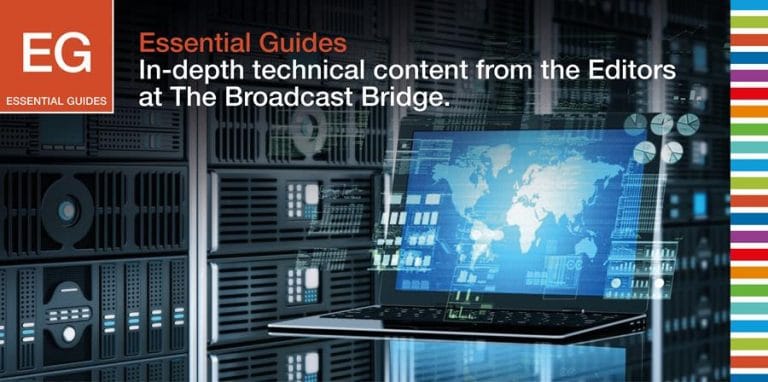
For example, integrating with Daktronics to access game times, scores, and other stats. This was implemented during the Super Bowl, allowing for seamless integration between different leagues and their stat generation. This data can now be incorporated into replay systems and editing suites, eliminating the need for manual metadata tagging. A lot of this innovation is driven by younger engineers. Cassidy and Phil have mentioned the importance of trust, especially when allowing those without traditional engineering backgrounds to contribute. This has been pivotal in the development of 2110, bridging the gap between broadcast and IT. There’s now a willingness to experiment, even if it means potential failure, as long as it’s controlled and on non-critical sources. This is a shift from the past, where there was a fear of system failures.
Philip: Cassie, a related question for you. With your work at swXtch.io, you’re at the forefront of moving operations to the cloud. Are your customers embracing 2110 and looking to innovate beyond their traditional methods?
Cassidy: Absolutely. My experience at NAB, representing swXtch and cloud technology, was eye-opening. I anticipated having to advocate for the technology, much like we did with 2110, especially in an SDI-centric environment. However, attendees approached me with unique challenges, seeking innovative solutions. The conversations were more open than I expected. While I had prepared workflows based on traditional concepts, most attendees were already familiar with advanced solutions like 2110 combined with 2022 Dash seven in the cloud. They were eager to explore these options.
The elasticity of cloud resources sometimes means we have to guide clients to avoid over-experimentation. It’s essential to focus on the system’s design and intended deployment, even though experimenting can be enticing.
Jesse: Cassidy, do you think the rapid deployment of these technologies is due to what I’d call the “Google effect”? It seems like many innovations are being implemented during someone’s lunch break. It’s as if the best R&D is now happening on the customer’s side.
Cassidy: Absolutely. I couldn’t agree more.
Philip: Luciano, I have a specific question for you. Given that you’re based in Europe, in the EMEA region, I’m curious about the adoption rates of 2110 technology. In the States, our approach can be quite uniform. Some might even joke that visiting states like Alabama or Georgia feels like entering a different country. But in Europe, is the adoption of 2110 consistent across the continent and the EU? Or do you notice certain countries embracing it more than others?
Luciano: Yes, there’s definitely a rising trend of television and service providers beginning to use 2110. In the OB, or Outside Broadcast, there’s a lot happening. I’ve observed there might be a limitation in the expertise you can have in a mobile truck that’s always on the move. You really need a team that’s deeply knowledgeable in IT and engineering. These aren’t typically the kind of people who are used to being on an outside broadcast venue, constantly away from home. But broadly speaking, in the media hubs, the adoption of 2110 is quite extensive.
Philip: A curious question just came to mind. In the SDI realm, we’re familiar with the 28 RU refrigerator-sized equipment. Once you purchase from a particular vendor and adopt their control system, switching to another system is a massive undertaking. Especially for operations running 24/7 or even 12 hours daily, there’s hardly any time for such transitions. So, you’re essentially committed to that control system for the long haul. However, in the 2110 environment, things seem more flexible. While I’m not certain if we’ve reached a point where routing panels are universally compatible with ISO four and ISO five, do you think there’s a possibility for more fluid transitions between control systems? For instance, if someone starts with a Lawo system and later feels that Evertz or Imagine offers a better solution, the switch might be more straightforward. With ISO four and ISO five streamlining the process, could we see a future where control systems are swapped out more frequently?
Jesse: I believe we’re heading towards a time where those significant, all-encompassing purchases will become less common. When you mention the refrigerator analogy, it’s like you bought that entire setup – the ice chest, the ice cubes, and everything else – to ensure it functioned optimally. But with the shift to 2110, once it’s properly integrated, you can opt for a control system from a variety of vendors. I can’t stress enough the importance of reaching out to these vendors. Almost every one of them offers a control instance, albeit tailored to their own products. But the beauty of current technology is that you can remotely access and test these systems in a sandbox environment before making a commitment.
To address your question directly: yes, I believe we’ll reach that point. However, financial considerations will always play a significant role. If I approached my CFO today and said I wanted a new control system just because it has some new features, they’d likely scrutinize past capital expenditures and question the return on investment. There’s always the challenge of justifying costs, especially if you’ve recently invested in a system. Everyone wants to see a return on their investments.
That said, I wouldn’t be surprised if companies start developing their own control systems tailored to their specific needs. For instance, NEP has introduced their own 2110 control system in Australia. From what I’ve gathered, it’s performing exceptionally well and is tailored to their operations. Those who use it seem to appreciate its features. As the industry evolves, I expect more of such tailored solutions to emerge.
Philip: I’ve been pondering how, in the past, our model was akin to having a massive refrigerator, and we directed that refrigerator on where to send the signals. Now, it seems we’re more engaged with the endpoint, instructing it on which signal to tune into. Especially with ISO five, I’m wondering if we’ll see systems like Adobe Premiere or DaVinci Resolve, where an editor might need a signal routed. Could the system have built-in capabilities to display available signals through ISO four discovery and allow selection? Cassidy, do you foresee a shift towards this kind of decentralized approach?
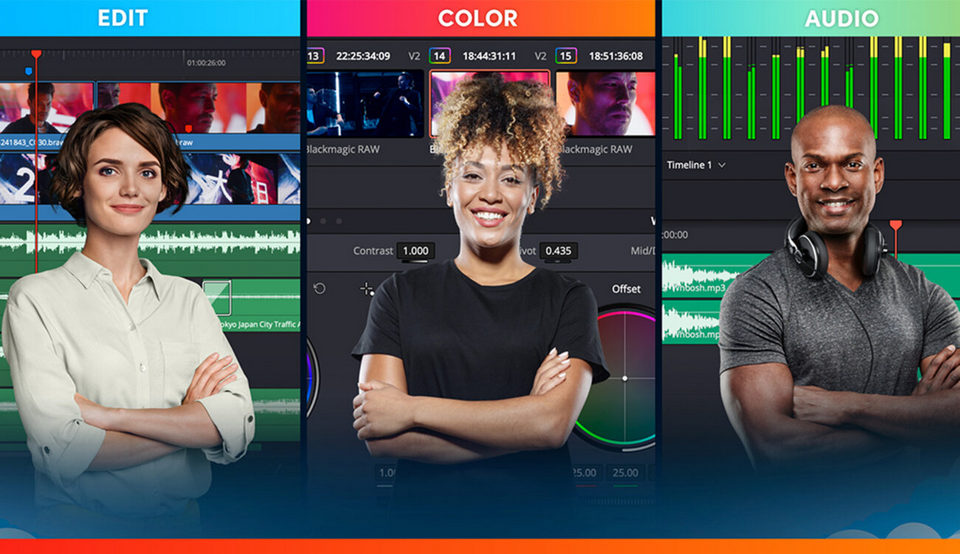
Cassidy: Absolutely. As you hinted earlier, traditional control systems were deeply intertwined with their crosspoints and the accompanying hardware. But with ISO four and five, facilitating discovery and connection commands, anyone could potentially manage it. Given that these are html5 interfaces, the real question becomes: How do I want my user interface to appear for each specific role or task? It might differ from one event to another. Perhaps there’s a need for some in-house development, whether by the client or the integration team. As Jesse mentioned, when a new enticing feature emerges, it’s akin to the allure of a new camera. The onus is now on control system manufacturers to design an interface that stands out from the competition, not just in terms of controlling that “giant refrigerator”, but in offering a user experience that’s compelling enough to drive sales.
Philip: Building on that, Luciano, is there something lacking in the 2110 standard, or from a manufacturer’s standpoint regarding 2110, that you feel is absent? At Sky, is there a particular feature, function, or standard you wish was integrated or established?
Luciano: The discussion around controllers is particularly intriguing for us. We’re aiming to distribute operations across various territories to optimize efforts throughout the group. However, one area that hasn’t been fully addressed is the management of Dolby, specifically dash 31. Some manufacturers support it, while others don’t. Currently, we’ve attempted to manage Dolby through dash 30, which isn’t compatible with certain systems that ideally should be using dash 21. The potential with audio, as we’ve seen even in the traditional SDI environment, is vast. Yet, there are still compatibility issues. As we transition more of our operations to the cloud, including production galleries and other roles, and as we explore multicasting in the cloud, addressing these audio challenges, especially with 2110, will be a primary focus in the coming months.
Philip: That leads me to another intriguing point, Cassidy. I recall Hugo from Sony discussing the Precision Timing Protocol. Timing has always been crucial in our industry. Two decades ago, we were concerned with microseconds to align colors. As we transitioned from SDI to IP, our timing standards seem to have relaxed a bit, now operating in milliseconds. And with compression, we’re even looking at seconds. Given your expertise in the cloud realm, how do you perceive the role of timing and PTP? How do these factors influence what you can achieve, not just in the cloud, but across different continents?
Cassidy: Absolutely, Philip. There are several dimensions to this that intrigue me. We’re aware that PTP can function in the cloud. But, drawing from our discussions years ago about multi-facilities, what’s the significance of PTP between these facilities? With 2110’s distinct essences, understanding when things were created is crucial to realign them, even if we later adjust them within the cloud. Presently, many cloud environments lean on NTP, but I foresee a shift towards PTP hardware timestamping. This would enable us to establish a virtual control room in the cloud, ensuring the machines are synchronized. However, we must remember that PTP doesn’t defy the laws of physics; it can’t achieve teleportation. So, while we can utilize timestamps to realign content, latency remains a factor. The true potential of 2110 lies in its flexibility with essences. Timestamps are invaluable, but their application is pivotal. If we’re orchestrating a production with audio and video from diverse sources, consistency is paramount. Even within the cloud, we can approach hardware-level accuracy and latency. The primary challenge with uncompressed 2110 in the cloud is bandwidth. Luciano’s mention of 2110 underscores this. While 2110 Dash 22 JPEG XS is less bandwidth-intensive, it’s still heftier than most existing cloud operations.
Philip: It’s about having the right environment and use case for experimentation. 2110’s importance for alignment is undeniable. Now, Cassidy, putting on your SMPTE governor’s hat for a moment, with the emergence of 22 and its JPEG focus, do you see formats like NDI potentially integrating into the SMPTE 2110 standard? I realize this might be a touchy subject among SMPTE professionals, but is there a possibility for a unified standard that encompasses various compression techniques?
Cassidy: I believe you’re spot on about topics like HDR 264 and the push towards higher compression ratios for reduced bit rates. NDI becomes challenging when dealing with proprietary formats because it boils down to what the owners of that format are open to. I’ve always maintained that every system I’ve worked on had a hybrid element, be it interfacing with an SDI component, an NDI component, or some older technology that’s still in use. I’ve encountered 2110 systems that still need to manage analog video during transitions. The real question is: what serves as the gateway, where is it located, and how restrictive is that gateway? Additionally, is the operational requirement for the alternative format so significant that it can’t be restructured to align with the rest of the system?
Philip: Jesse, reflecting on your major event last year—was it the Super Bowl?—where sports coverage was extensive. If I recall correctly, you had around 15 or 16 trucks, excluding the halftime show. Can you envision a future with 2110, especially as companies like CenturyLink (now known as Lumen, I believe) are equipping stadiums with 100 Gig connections? As we see an increase in high-bandwidth fiber connections at major venues, do you think there might come a day when, instead of deploying four or five trucks, we might just need a sprinter van or a single truck?
Super Bowl: How to shoot the most expensive TV show on the planet
Jesse: That was a seamless transition. This was the first Super Bowl where we had the advantage of being in Phoenix. Fox had just constructed a large NOC for all their distribution. We set up 200 Gig circuits for distribution between the locations. In the primary area where trucks usually park, only two were stationed. Instead, a tent was erected, and fly packs from the World Cup were utilized, which were transported in shipping containers. The future seems to be leaning towards the use of fly packs or portable control rooms. The key factor is cost. Fox used this setup as their distribution system for every international feed throughout the stadium in the US. They established a contribution hub with two large tents, one on the concourse level and another on the field level. There’s extensive documentation on this, and it’s fascinating to see the transition from the Men’s to the Women’s World Cup, which I believe starts either tomorrow or Thursday.
Regarding the future of mobile units like Game Creek, I foresee a shift in their model. They might have control rooms at their primary locations and deploy trucks solely for cameras and distribution equipment, especially as fiber connectivity becomes more prevalent in stadiums. We’re already witnessing this transformation. These companies will adapt and innovate. When I initiated my first 2110 project in 2017, it raised eyebrows. We had a comprehensive plan spanning three years for the Super Bowl, but due to supply chain constraints, we had to expedite the entire system setup in just two and a half weeks.
These entities will continue to evolve, possibly integrating cloud solutions. Referring back to NDI, SMPTE is endorsing IP MX with the IP showcase, emphasizing compressed video in the SMPTE 2110 format. The future might be a blend of traditional and cloud-based solutions. I recently attended the RSN Summit, where discussions centered on monetizing mobile platforms and web content. The ever-changing landscape compels everyone to adapt, innovate, and embrace the discomfort of venturing into new territories.
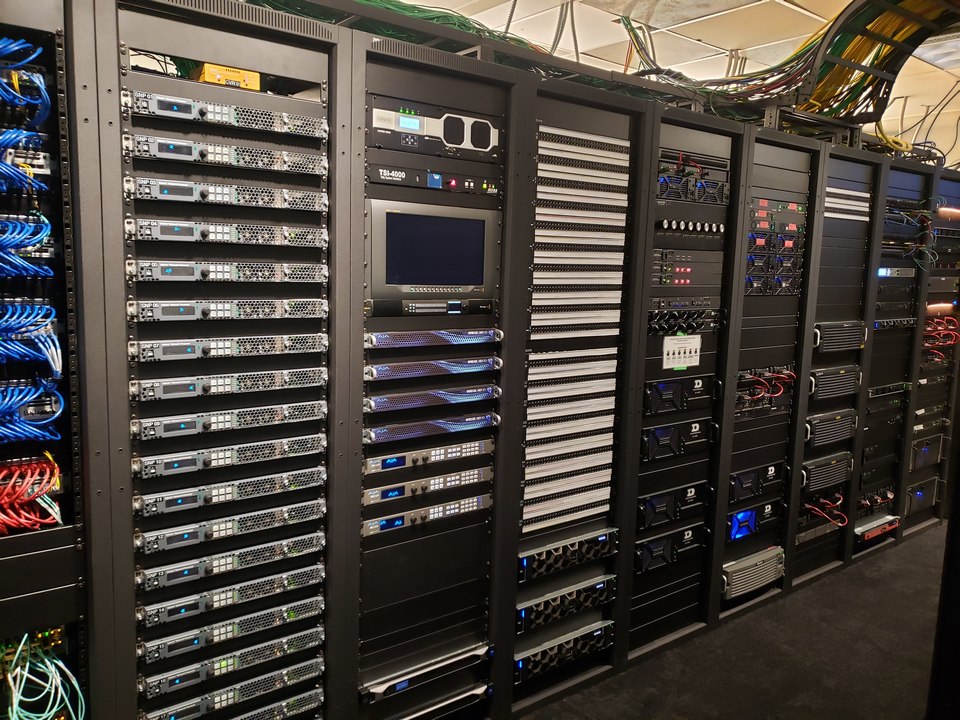
Cassidy: One of my favorite sayings, and I’ll put it in my own words, revolves around the themes of efficiency and sustainability. Over the past few years, I’ve been emphasizing these points. I stumbled upon the realization that 2110 was significantly more efficient, and it was a topic worth discussing. Even within an HDX system, the benefits are evident. You end up saving a considerable amount of rack space and equipment. The electrical efficiency is about 80% better compared to the previous SDI solutions. When I first transitioned to this technology, I discarded an entire trashcan filled with outdated VAs and equipment that had become redundant. I believe many have observed this. When we hear Jesse discuss entities like NEP, it’s evident they’ve experienced similar revelations. The realization hits that there’s no need for numerous intermediary devices. It’s possible to reduce latency and simultaneously boost bandwidth. The roles of technical directors, camera operators, and engineers remain crucial. However, they no longer need to oversee as much equipment, and there’s less concern about maintenance.
Jesse: Building on Cassidy’s point, I’ve always aimed to present this in a way that resonates with a broader audience. Consider the introduction of electric cars. The initial skepticism was rooted in their limited range, with many believing they could only travel 100 miles. Yet, when challenged, most people realized they only drove an average of 20 miles daily for their commute. The fear was always about the battery depleting. Drawing a parallel to this, when planning a design, I urge you not to fixate on the massive equipment. Instead, jot down the actual number of sources you possess. You might be surprised to discover that transitioning to the 2110 system requires far less investment than anticipated, allowing for scalability and efficiency.
Philip: One of the standout advantages, even when considering 2022 and 2110 on the IP side, is the elimination of constraints on your IO counts. They can expand almost indefinitely. Take, for instance, the Arista’s 7500 or 7800 series with their 16 line cards. Some now even boast 400 Gig capabilities. This means you can effectively have a 4000 square 8K 120 router in these setups.
Philip: Luciano, turning our attention to Europe, there’s a significant amount of OBs and production happening there. Are you witnessing a shift in this model? Given that Europe consists of multiple countries with their respective boundaries, even within the EU, crossing a boundary with fiber might present unique challenges. Are you observing a trend where fewer trucks are deployed to events, with a lean towards smaller setups and stationary control rooms, especially with the cloud integration and the work you’re doing in that domain?
Luciano: Absolutely. The shift is already in motion. We’re remotely managing events like Formula One and MotoGP. In Italy, our second-tier football league is operated remotely, and I anticipate this trend extending to the third league as well. The approach is to send a minimal crew, perhaps two or three individuals, equipped with basic camera systems and encoding tools. Maybe one on-site commentator is required, along with some audio equipment, but the majority of the operations are relayed back to a central venue. At Sky, we’re pioneering this in the cloud. Currently, we’re running over 60-70 galleries in the cloud every weekend, with plans to double this soon. The cloud offers immense benefits for a distributed group like Sky. We can replicate workflows, launch channels exclusively for cloud content, and manage a federated MCR across different countries.
We’re also actively working on multicasting in the cloud, which will be a game-changer. It allows us to run multiple galleries, offer content in various languages, and distribute it across European territories with diverse linguistic needs. This isn’t just a glimpse into the future; it’s our present reality. Companies like NEP or EMG in Europe are undergoing transformations. While they still operate traditional trucks, they’re also establishing Media Hubs to offer remote services. For instance, in the UK, as we approach the Premier League season, EMG is one of the companies providing these services, catering to multiple broadcasters and creating hubs that can function remotely.
Within the next five years, I anticipate a complete shift in this direction. In Italy, Serie A, which is the premier football league, established a hub a few years ago. This hub connects all the stadiums and houses the DVR for replays. I’m confident that in the coming years, they’ll begin remote production and handle both content creation and distribution. This isn’t a future prediction; it’s happening now.
Philip: Jesse, in our field, the latest advancements like 4K, 8K SDIs, and 2110 are typically first adopted by industry giants like ABC, Disney, and Fox. Gradually, these innovations trickle down to the second tier, and eventually to corporate sectors. Now, with products like the Blackmagic Atem mini switcher, professional-level switching is accessible to many. As 2110 becomes more cost-effective and less complex, are you observing its adoption in local stations, AA or AAA league collegiate sports, and other areas that traditionally relied on SDI?
Jesse: Collegiate sports are indeed seeing a shift. I’m aware of universities that have fully embraced 2110 this year. Their RFPs were exclusively for 2110 solutions, sidelining traditional baseband options. Another significant player in the news sector is also considering 2110, though the adoption rate there is slower. In the AA and AAA leagues, many still prefer baseband, primarily due to the infrastructure challenges in their stadiums. Even with major upgrades, they often retain their existing cabling since it remains functional. However, Luciano’s mention of the second screen intrigues me. The versatility of 2110 could redefine how companies like Game Creek or NEP operate. Previously, large events required an Engineering Support Unit (ESU) to manage feeds. Imagine a world where the same setup is used daily, complemented by a cloud hybrid system to distribute those feeds in multiple languages and formats like NDI, SRT, IP MX, and 2110. The potential scalability and this innovative approach are certainly worth exploring.
Cassidy: SMPTE 2110’s integration with compression and cloud technologies is revolutionizing content coverage. One narrative I’ve often shared is about increasing accessibility. There have been events, as Jesse can attest, that might have been overlooked due to the need for extensive equipment. Now, as Luciano highlighted, smaller production units can handle the task. An entire distribution hub or production studio can be condensed into a truck or even virtualized. This shift means that content, previously deemed unfeasible, can now be produced. The accessibility this offers is unprecedented. Beyond the production flexibility that 2110 provides, when combined with compression and cloud technologies, it feels like a globally interconnected mesh. The result? An overwhelming array of content options for viewers.
Philip: This is a specific question for Cassidy. We’ve worked together for a long time, and I’ve always affectionately called him “Young Cassidy.” In the past, especially with older broadcast engineers, a single black frame could end your career. But now, with platforms like YouTube, Vimeo, and TikTok, and the rise of mobile broadcasting and recording, we’re transitioning to IP, which doesn’t have the same strict standards. While we never want to drop a packet, are we seeing system designs where clients are willing to sacrifice a bit of that “perfection” for flexibility or cost savings? Or is the expectation still rigid, where dropping a packet or frame is unacceptable?
Cassidy: It really varies. Without diving deep into marketing, we’re currently working on lossless streaming through the cloud, and it’s promising. There are situations, perhaps like Luciano’s Sky team, where maintaining the original quality of a file or video is paramount. Preserving the pristine quality of the original source is essential for certain applications. However, I view the current industry in a way where YouTubers are akin to affiliate stations. The content is what truly matters, not so much the distribution format. I recall in my first master control job, we aired some low-quality cell phone footage. The station owner was appalled by its quality. But that was the only footage we had to support our story back in the early 2000s. Now, consider the video quality we see in news stories today; standards have shifted. So, it really depends on the context. On another note, referring to the 2110 conversation, I’ve seen a system designed for HD where the owners decided to upgrade it to UHD overnight. This was possible because of the robust core of the IP system. If it were an SDI router system, such a change would’ve been challenging. The possibilities with IP are vast, offering immense flexibility, but the requirements vary based on individual needs.
Philip: As we approach the end of our time, I’d like to thank everyone for this enlightening discussion. Following the American idiom, “let’s go around the horn,” I’d like to hear from each of you about your current projects and any insights you’d like to share. Luciano, let’s start with you. Can you tell us about what Sky is working on and any updates related to 2110?
Luciano: Certainly. We see a significant opportunity to revolutionize how we produce content to enhance our clients’ experience. Our aim is to offer diverse perspectives on the same event. For instance, we recently integrated onboard cameras from Formula One races directly into secondary screens on our Sky Sports app and other platforms. This allows viewers to access specific graphics, commentary, and even follow a particular team or driver like Ferrari, Mercedes, or Red Bull. The goal is to immerse viewers in the experience while also being mindful of costs. The challenge is to deliver top-notch quality without escalating expenses.
Philip: That’s fascinating, Luciano. Jesse, over to you. What’s new on your end, and what would you like our audience to know?
Jesse: Thanks, Philip. While it might seem a bit tangential, my experience with 2110 has led me to establish JPM Technology Consulting. My mission is to mentor and guide the next generation of engineers. The broadcast industry has been transformative for me, both personally and financially. I’ve had the privilege of collaborating with young engineers from Glendale Community College and Texas A&M. They’ve taught me the value of an open mind and the importance of embracing new perspectives. While I started with breadboards, they’ve grown up in a world of programming. In the context of 2110, their skills are invaluable. I urge everyone to invest time in mentoring the younger generation. Their fresh outlook can be a game-changer, especially at a time when many are struggling to find skilled engineers.
Philip: Absolutely. My involvement with SMPTE is also geared towards engaging the younger generation. I fondly remember when Cassidy, or “Young Cassidy” as I called him, joined us. I believe you were just 12 then? Now you’re in your 30s. It’s crucial for our industry to actively engage and train the upcoming generation, ensuring they benefit from our experiences. Cassidy, let’s conclude with your insights. What’s on your plate?
Cassidy: Before I delve into my personal updates, I’d like to emphasize the importance of mentorship in our industry. We could dedicate an entire podcast to discussing the future of the industry, the significance of training, mentorships, and apprenticeships. I’m sure many of us owe our success to mentors who guided us. Despite the challenges, I believe the media and entertainment sector is experiencing growth, especially with the increased accessibility provided by smartphones and other devices. The key is understanding our role in this evolving landscape and integrating our efforts cohesively. The media industry is expanding in intriguing ways.
Cassidy: On a personal note, at Switch, we’re exploring the boundaries of technology. We’re delving into questions like: How much can we push the limits? How can we simplify processes? How can we seamlessly integrate 2110 and other IP formats through the cloud? Everyone’s discussing the potential of the cloud, be it for burst capacity during peak times or for establishing diverse redundancy paths across multiple cloud platforms. We’re currently navigating challenges related to dash 721 10, PTP, and translations between uncompressed and compressed formats within the cloud. Our objective is to ensure that professionals like Luciano or Jesse can easily integrate their existing systems without the need for custom APIs. What excites me is the opportunity to collaborate with industry experts, understand their unique needs, and craft tailored solutions. It’s like having a vast toolbox, and I’m thoroughly enjoying exploring its potential.
Philip: I’d like to extend my gratitude to all of you for this enlightening discussion. I hope our readers found it as educational as I did. Conversations with Jesse, Cassidy, and of course, Luciano, are always a pleasure. It’s great to associate a face with the projects we’ve collaborated on in the past. On that note, I wish everyone a good day or evening. Please join us next month for another episode of TKT Visionaries. Farewell.
The online roundtable, Visionaries, delves into the most impactful and technically complex projects within the TV and film industry across the North American continent. Visionaries is represented by its key expert, Philip Grossman, an independent advisor who offers thought leadership and solutions architecture to leading film and television industry professionals and organizations in the United States.
